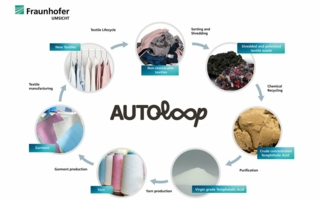
Chemical recycling of synthetic fibres (PET) into new basic chemicals – a key technology component of the Autoloop project. © Fraunhofer Umsicht
Jedes Jahr landen Millionen Tonnen alter Kleidung und Stoffe auf Deponien oder werden verbrannt, was nicht nur enorme Abfallmengen verursacht, sondern auch wertvolle Rohstoffe verschwinden lässt. Recycling bietet hier eine Lösung, indem es hilft, Materialien wie Baumwolle, Polyester und Wolle wiederzuverwerten und in den Produktionskreislauf zurückzuführen. Für Unternehmen, Verbraucher und die gesamte Branche ist es entscheidend, sich mit diesen innovativen Ansätzen auseinanderzusetzen. Nur so können wir den ökologischen Fußabdruck der Textilindustrie verringern und den Weg zu einer nachhaltigeren, zirkulären Wirtschaft ebnen.
Auf unserer Themenseite „Recycling“ sammeln wir alle relevanten Artikel und Informationen, die einen tieferen Einblick in diese wichtige Thematik bieten. Dadurch schaffen wir unter anderem Gelegenheit für Kooperationsmöglichkeiten – sei es für den Austausch von Ideen, die Zusammenarbeit bei Recyclingprojekten oder die Suche nach innovativen Lösungen. So möchten wir Sie dabei unterstützen, nicht nur Ihr Wissen zu erweitern, sondern auch aktiv zur Entwicklung einer nachhaltigeren Textilindustrie beizutragen.

Chemical recycling of synthetic fibres (PET) into new basic chemicals – a key technology component of the Autoloop project. © Fraunhofer Umsicht

The RETRAKT research project addresses the urgent need for transformation in the textile industry. © Meisenbach Verlag - Generiert mit KI
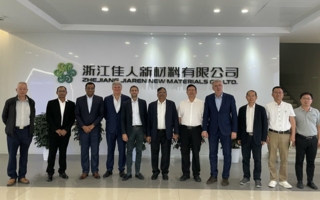
Senior Management representatives from Jiaren and Indorama during a plant tour at Jiaren. Both companies formed a joint venture to enhance global textile circularity. © Indorama
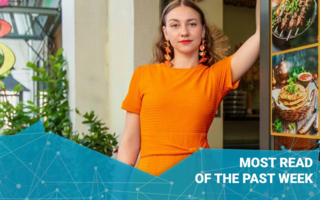
The innovation demonstrates how established textile technologies can unlock new market opportunities through targeted development. © André Leischner
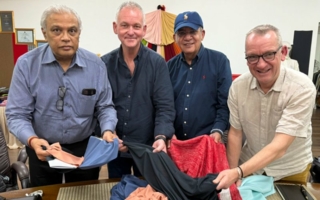
Asia Pacific Fibers' Re-petitive yarns are made from recycled polyester using BlockTexx's S.O.F.T. separation technology to process post-consumer textile waste. © BlockTexx
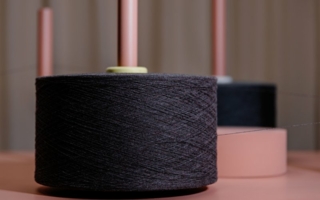
The Wyron truecycled yarn consists of 50% post-consumer textile waste and 50% recycled polyester. © Brain of Materials
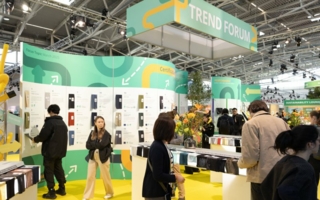
Under the new Focus Topic “Textile to Textile – The Role of Recyclers”, the fair aims to provide in-depth insights into one of the most pressing challenges of the industry. © Performance Days
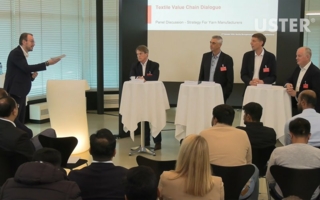
Stratos Fragkotsinos, Vice President Business Area Mill Management Solution, at Uster Technologies, moderating the panel discussion featuring (from left to right): Stefan Hutter, owner, Säntis-Textiles; Thomas Franz, Sales and Purchasing Manager, TVU; Michael Will, Head Textile Technology & Process Analytics, Rieter; Andreas Merkel, CEO, Otto Yarns. © Uster
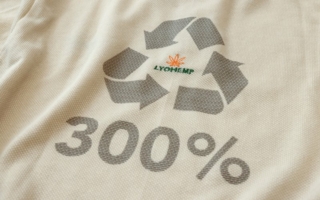
The innovative recycled fibre has been used to make the polo shirt in a piqué fabric – with a soft feel and slight sheen. © TITK / Steffen Beikirch
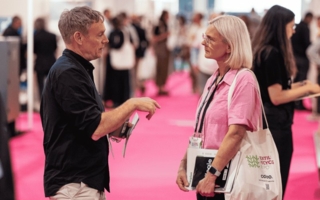
Exhibitors at Textiles Recycling Expo USA can expect to connect with influential buyers and specifiers from across the supply chain. © AMI
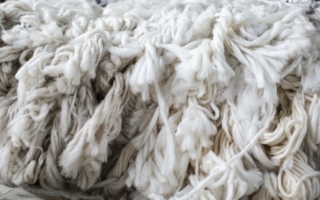
Lenzing, Marchi & Fildi S.p.A, and manufacturing partners unlock premium quality for recycled natural fibers with Tencel Lyocell. © Marchi e Fildi

The Altag Fibre Club brings together a consortium of forward-thinking value supply chain partners. © AltMat
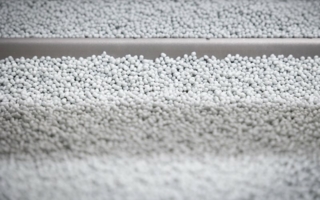
Re&Up Next-Gen Polyester Chips are polyester chips resulting from the recycling of pre-consumer textile waste. © Re&Up
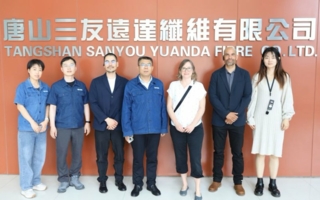
Translator and interpreter Bela Zhou, Canopy’s Neil D’Cruze and Catharine Grant, Tangsharn Sanyou’s Mr. Dongbin Zhang, Canopy’s Miki Tokashiki, Mr. Hui Liu and Ms. Helena Cui from Tangshan Sanyou at the new facility. © Tangshan Sanyou/Canopy

The laminate fabrics make mechanical recycling more feasible, while maintaining the trusted breathability, durability, and weather protection. © eVent Fabrics

More than 50 expert speakers discussed the latest developments in regulations, technologies, recycling projects and practical ways to increase waste recovery rates. © AMI
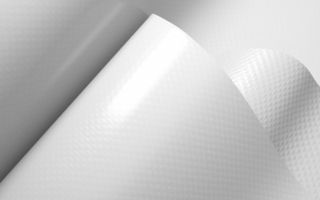
“Rivercyclon 450 FR” is constructed entirely from polypropylene – including a PP 1100Dtex base fabric and a dual-sided modified polypropylene coating. © Rivertex
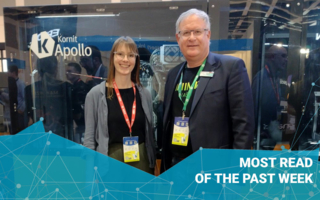
According to Peter Alderath, General Manager DACH & BeNeLux at Kornit Digital, the Kornit Apollo digital production system has the highest output on the market with 700,000 t-shirts per year for systems like these that only require a single operator. © Meisenbach GmbH
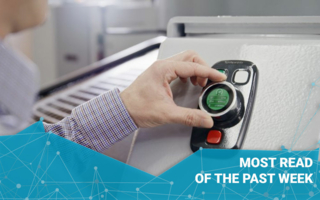
The new machine control system “Control 5.0” from Mayer & Cie. makes the company’s circular knitting machines Internet- and knitlink-ready, preparing them for the digital future of textile production. © Mayer & Cie.
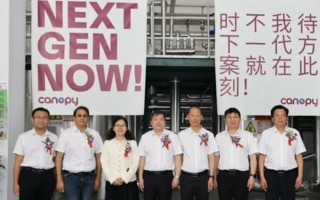
From left: Mr. Zixin ZHANG, CCFA; Mr. Dinesh J. Dhankani, Liberty Group; Ms. Shan HUA, Director, Chinese Textiles Economy Research Center, CNTAC; Mr. Changjin SHAO, Xinxiang Chemical Fiber; Mr. Xinwei CHEN, CCFA; Mr. Yudong JI, Xinxiang Chemical Fiber; Mr. Yueting XIE, Xinxiang Chemical Fiber and President of the Bailu New Materials Institute. © Canopy/Bailu
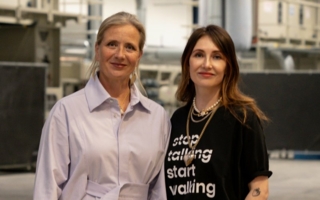
Founder and CEO Ellen Mensink with activist Carice van Houten at the Brightfiber Textiles factory. © Renske Meinema